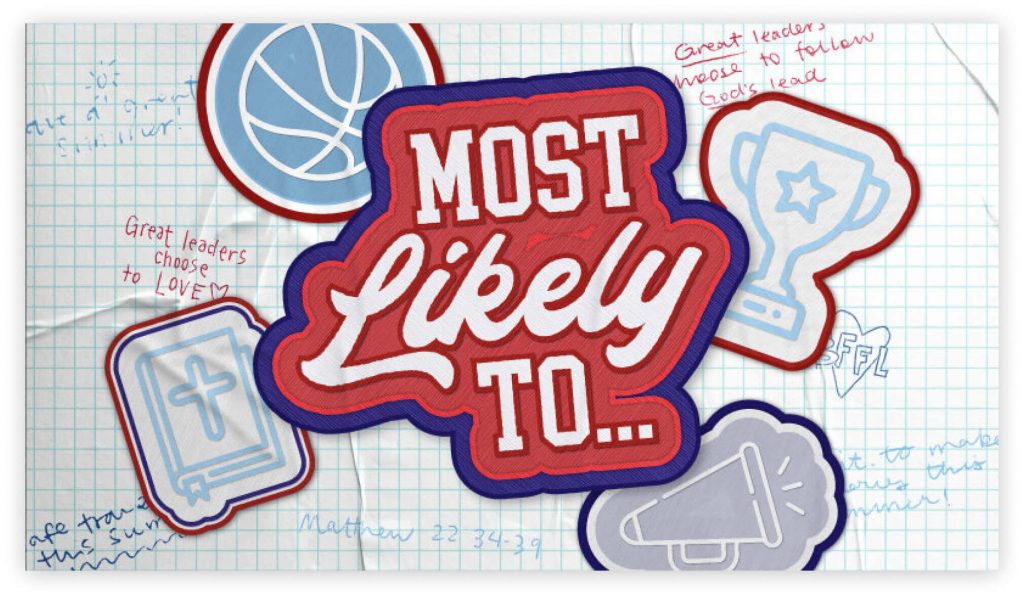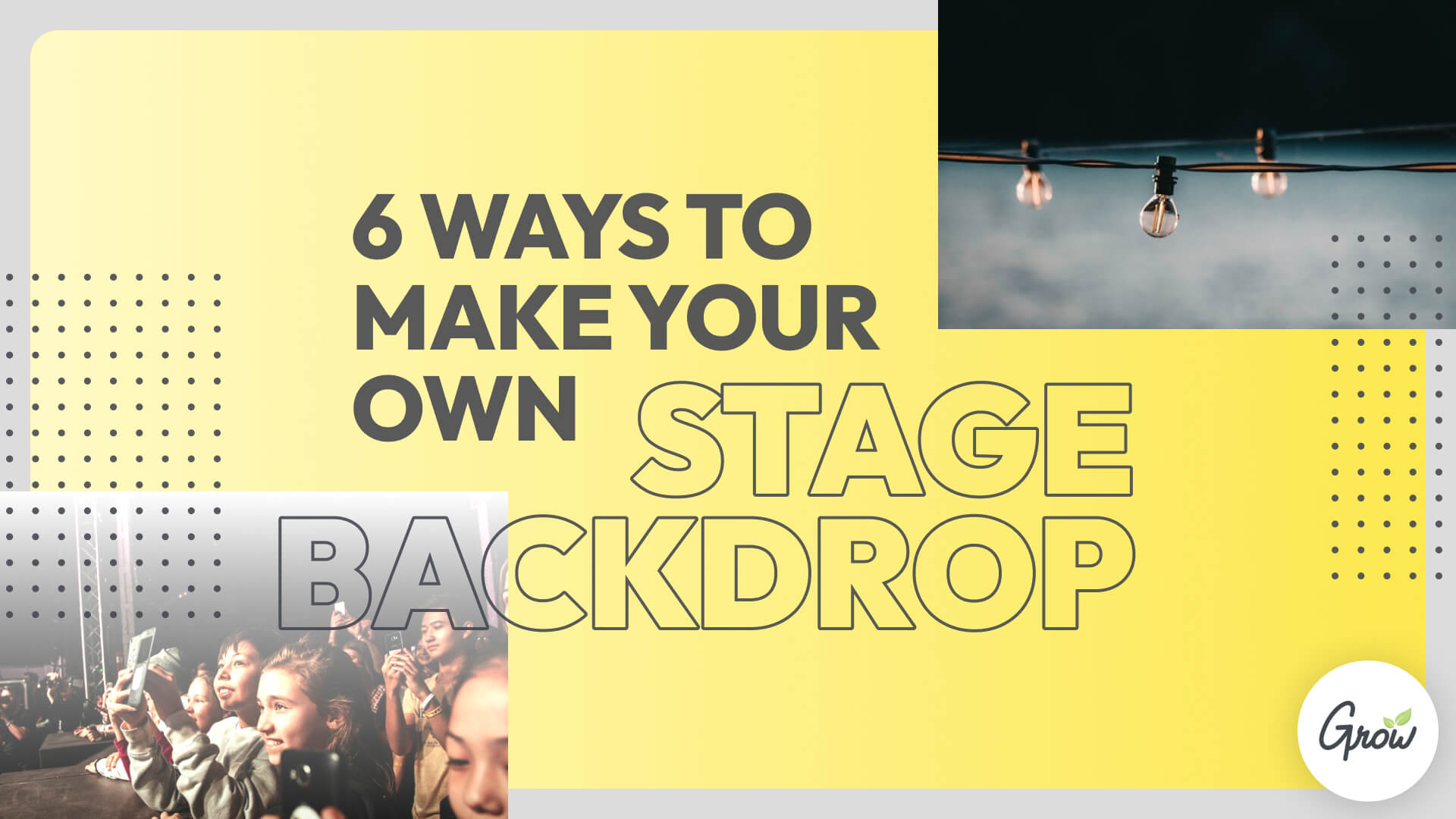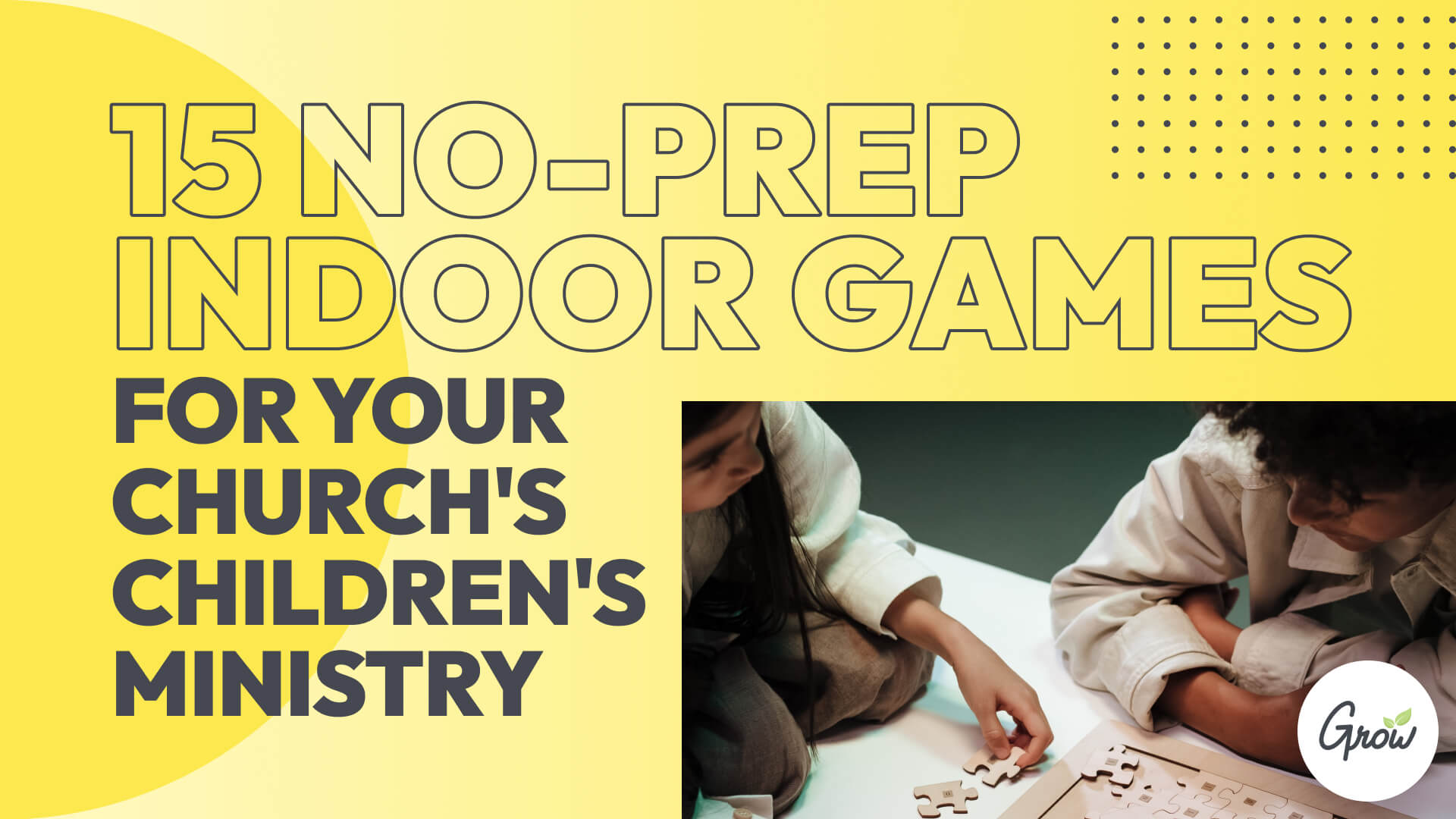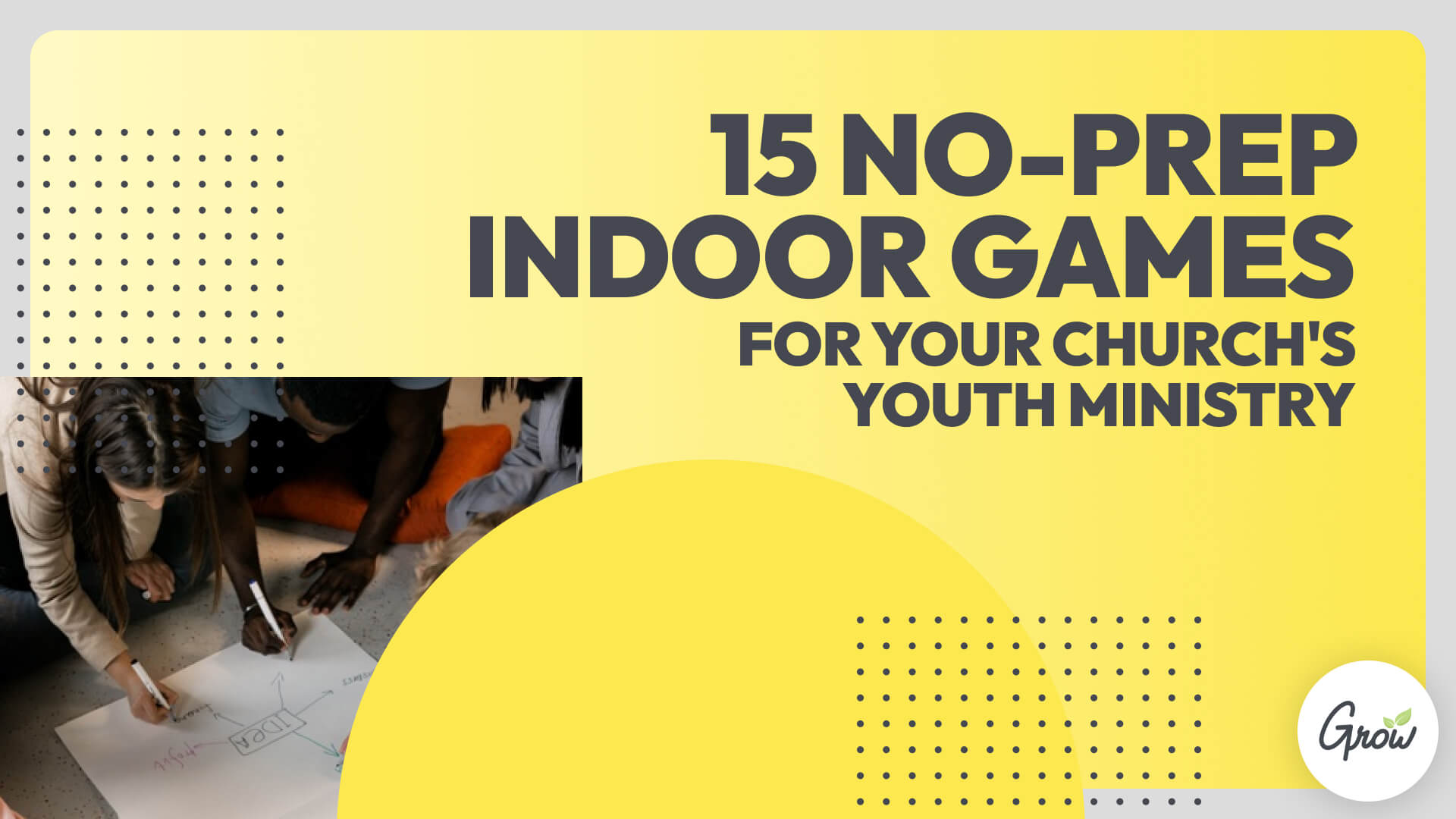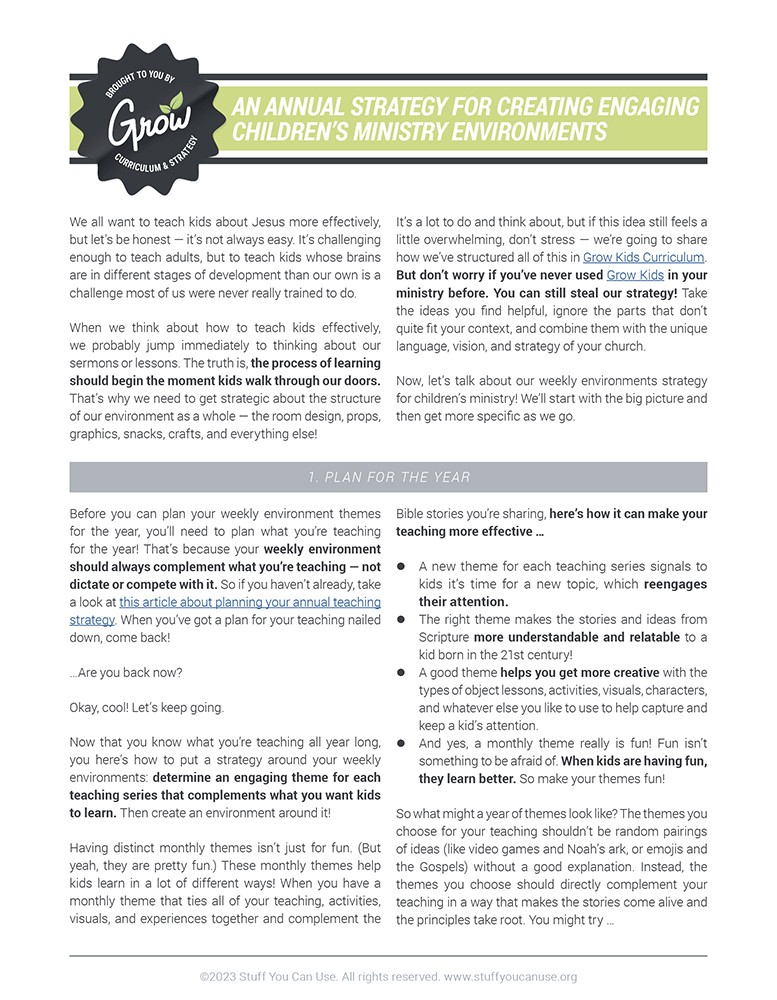We all want to teach students about Jesus more effectively, but let’s be honest — it’s not always easy. It’s challenging enough to teach adults, but to teach teenagers whose brains are in different stages of development than our own is a challenge most of us were never really trained to do.
When we think about how to teach teenagers effectively, we probably jump immediately to thinking about our sermons or lessons. The truth is, the process of learning should begin the moment teenagers walk through our doors. If that’s the case, then we need to get strategic about the structure of our environment as a whole — the room design, props, graphics, snacks, and everything else.
It’s a lot to do and think about, but if this idea still feels a little overwhelming, don’t stress — we’re going to share how we’ve structured all of this in Grow Students Curriculum. But don’t worry if you’ve never used Grow Students in your ministry before. You can still steal our strategy! Take the ideas you find helpful, ignore the parts that don’t quite fit your context, and combine them with the unique language, vision, and strategy of your church.
Now, let’s talk about our weekly environments strategy for youth ministry! We’ll start with the big picture and then get more specific as we go.
1. PLAN FOR THE YEAR
Before you can plan your weekly environment themes for the year, you’ll need to plan what you’re teaching for the year! That’s because your weekly environment should always complement what you’re teaching — not dictate or compete with it. So if you haven’t already, take a look at this article about planning your annual teaching strategy. When you’ve got a plan for your teaching nailed down, come back!
…Are you back now?
Okay, cool! Let’s keep going.
Free PDF Resource
An Annual Strategy for Creating Engaging Youth Ministry Environments
Create engaged ministries for students with Grow Curriculum's annual strategy for creating engaging youth ministry environments.
Now that you know what you’re teaching all year long, you here’s how to put a strategy around your weekly environments: determine an engaging theme for each teaching series that complements what you want teenagers to learn. Then create an environment around it!
Having distinct monthly themes isn’t just for fun. (But yeah, they do make things a lot more fun.) These monthly themes help teenagers learn in a lot of different ways! When you have a monthly theme that ties all of your teaching, activities, visuals, and experiences together and complement the Scripture you’re studying, here’s how it can make your teaching more effective …
- A new theme for each teaching series signals to teenagers it’s time for a new topic, which reengages their attention.
- The right theme makes Scripture more understandable and relatable to a young person born in the 21st century!
- A good theme helps you get more creative with the types of object lessons, activities, visuals, stories, and whatever else you like to use to help capture and keep a teenager’s attention.
- And yes, a monthly theme really is fun! Fun isn’t something to be afraid of. When teenagers are having fun, they learn better. So make your themes fun!
So what might a year of themes look like? The themes you choose for your teaching shouldn’t be random pairings of ideas (like video games and Joshua, or emojis and the Gospels) without a good explanation. Instead, the themes you choose should directly complement your teaching in a way that makes the stories come alive and the principles take root. You might try …
- A music theme to talk about creating new rhythms with our spiritual disciplines.
- A road trip theme when you explore how our friendships impact the direction of our lives.
- A superheroes theme to talk about how Jesus calls us to fight for justice in the world.
- Or maybe, when you’re studying a story or book of the Bible with a specific setting, you let the imagery of that passage become your theme, like the imagery we find in Exodus, Jesus’ parables, or the creation story.
If you typically start a new teaching series every 3-4 weeks, that means you’ll need a total of 12-13 themes each year. And when you’re deciding on your themes for the year, it’s probably a good idea to find a balance between …
- Keeping your themes new and fresh so students don’t get bored by seeing the same themes over and over again.
- Reusing supplies so you’re not filling your storage room with stuff you’ll never use again.
To learn more about how to do this well, check out this article about planning your annual ministry calendar. There’s a video walkthrough in there for you too!
2. PLAN FOR EACH SERIES
Once you know your theme for the teaching series, you can start building the rest of your physical environment. But keep in mind, the older your students are, the easier it is to trigger their “cheesy” alarms. So as you build out your monthly theme, be careful not to be gimmicky. While your younger middle schoolers might love it, being too themed-out is an easy way to lose your high schoolers!
Remember, your teenagers are probably not that interested in silly characters and tons of over-the-top decorations. Rather, they’re looking for an environment that makes them feel welcome, safe, and cared for. So as you incorporate your series theme into your weekly environment, do just enough to make it fun and memorable — but not so much that you leave everyone rolling their eyes at you. (Well, actually, they’re teenagers, so the eye rolls aren’t always preventable.)
When building out a monthly theme, here are a few things you could consider:
- ROOM DESIGN: Whether you’ve got a whole room, a single wall, or a big stage at your disposal, there’s probably something you can do to add interest and a theme to the room where your youth ministry meets. If you’re using Grow Students Curriculum in your ministry, you know we provide a handy little Environment Guide for every teaching series that comes with images, instructions, and supply lists for a room design that will complement the theme of each series. But if you’re not using Grow, that’s okay! If you need some help thinking of ways to decorate your physical space, check out this article on 6 ways you can build your own backdrop.
- MUSIC: From worship music, to your background playlists, to any special songs you use during times of reflection or response, your monthly topic and theme can help inform the songs you choose too. (And yes, if you’re using Grow Students, we make these song lists for each series for you too!)
- GRAPHICS & VIDEOS: And lastly, your graphics and videos can help reinforce your monthly theme too! When all of your images and videos stay in line with your monthly theme, it helps create a more immersive experience for students. Grow gives you tons of videos and images — we even give you all the editable files so you can make whatever visuals you need that we didn’t provide!
None of these fancy visuals could ever compare to the importance of the biblical truths you’re teaching, of course! So it’s important to keep all of this in perspective. If you’re looking to create a more fun, themed monthly experience for teenagers, this checklist will help you find new ways to integrate your theme into your weekly environment. But even if you never get a chance to decorate your space, you can still create a weekly environment for teenagers that makes a big impact. Let’s talk about how.
3. PLAN FOR THE WEEK
If we’re going to create effective and meaningful weekly environments for teenagers each week, we can’t just talk about your physical environment, decorations, and fun stuff. We’ve got to talk about the physical, emotional, and relational environment you’re creating each week too. The environments we create each week are so important, they can actually make or break whether or not young people receive the message we’re trying to share with them.
We’ve talked a lot already about the decorations, music, and physical space that goes into creating a weekly environment, but it’s so much bigger than that. It’s about creating environments that help everyone feel welcome in your church, and that reinforce what you’re teaching.
For teenagers, that means focusing on having fun through games and humor, asking questions instead of making assumptions, explaining anything that feels like insider language or information, and acknowledging there are people in the room who may not be familiar with church or don’t yet believe. So each week, think about what kind of environment you’re creating, beyond just the decorations.
- Is your environment physically safe?
- Is it emotionally safe?
- Is it fun?
- Is it loving?
- Is it inclusive of young people with disabilities?
- Is it welcoming to teenagers of diverse backgrounds, family structures, cultures, and experiences?
- In short, is your weekly environment a place teenagers want to be?
We hope so! Because teenagers struggle to learn or open up when they feel uncomfortable, unsafe, misunderstood, or bored. (And let’s be honest — we’re grown-ups, and we probably struggle with those things too.) But when teenagers feel welcome and safe, they are more free to learn! So be strategic about the environments you’re creating for teenagers. They might just be the key to helping them know Jesus better.
This is a lot to think about and plan for, we know — but if your strategy around creating compelling weekly environments will ultimately help teenagers get to know Jesus better, then it’s so worth it!
In case you missed it, check out this article about planning an entire year of ministry. It’ll show you how this weekly environments strategy could look on your annual calendar, alongside an annual strategy for your:
We’ve said this before, but we’ve got to say it again! These ideas we’ve talked about are nice … but these ideas only become a strategy when you put them on your calendar and turn them into actions.
When you have an annual plan to turn your ideas and goals into a strategy, you’ll make a much bigger impact.
And hey, if you’re using Grow Students Curriculum, we’ve already done some of this work for you. For every teaching series, we provide a monthly theme that complements the teaching content and includes everything you need to theme your program in our Environment Guides — decor ideas, editable graphics, music suggestions, games, and more!
But whether you use Grow Curriculum or not, we hope you’ll steal our strategy! We developed it over lots of years of ministry, with input from lots of church leaders and lots of trial and error. Take it, tweak it, and make it your own. We really hope it helps you be just a little more awesome at what you do this year!
Free PDF Resource
An Annual Strategy for Creating Engaging Youth Ministry Environments
Create engaged ministries for students with Grow Curriculum's annual strategy for creating engaging youth ministry environments.


